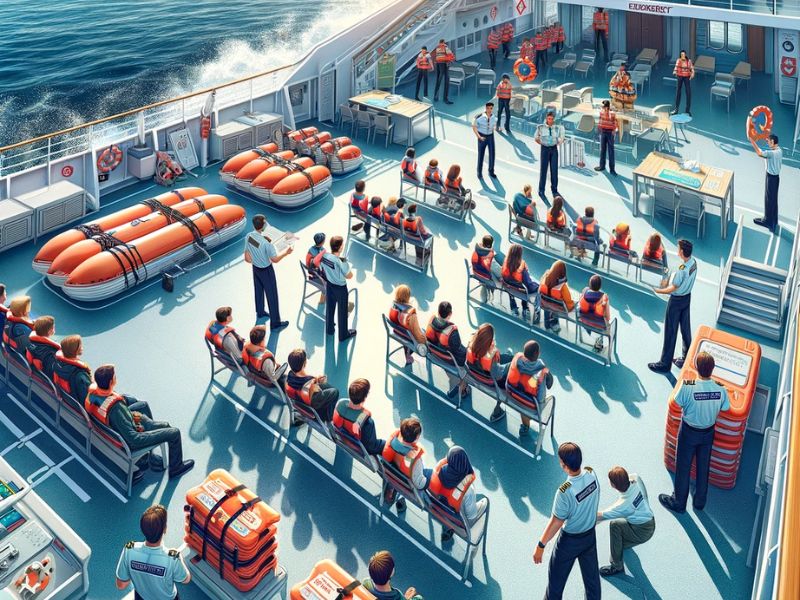
Rescue at Sea: Emergency Procedures on Board Ship
A Vital Protocol for Safety on the High Seas
In an environment as unpredictable as the sea, onboard safety of ships assumes crucial importance. Understanding and applying appropriate emergency procedures can make the difference between life and death. Let’s explore the fundamental principles of sea rescue, highlighting how the right training and equipment are essential to ensuring the safety of passengers and crew in case of emergencies.
The Importance of Safety Briefing
Before each departure, passengers receive a safety briefing providing crucial information on emergency procedures, including the location of life jackets and lifeboats. It is vital to pay attention to these instructions, as each ship has unique features and specific procedures to follow in case of emergency.
Roles and Crew Procedures
In emergencies, the crew follows a well-defined action plan developed to manage critical situations effectively. This includes setting up medical stations in safe areas, using specific codes to communicate various types of emergencies, and managing evacuation if necessary. Crew training and regular drills are essential to ensure that these procedures are executed correctly.
Safety Equipment and Rescue Devices
Safety equipment onboard a ship is designed to address various emergency scenarios. In addition to life jackets and inflatable rafts, some ships are equipped with hyperbaric lifeboats for divers and marine evacuation systems through large inflatable slides. Additionally, personal protective equipment, such as immersion suits and personal flotation devices, plays a crucial role in sea survival.
Drills and Training
Ships carrying passengers are required to conduct muster drills at the beginning of each voyage to ensure that passengers and crew are aware of how to behave in case of an emergency. These drills include the use of life jackets, the location of lifeboats, and other critical safety procedures.
Preparation and training are crucial to ensuring safety at sea. Both passengers and crew must take emergency procedures seriously and actively participate in safety drills. In an environment as unpredictable as the sea, knowledge and preparedness can save one’s own and others’ lives.
Sources


